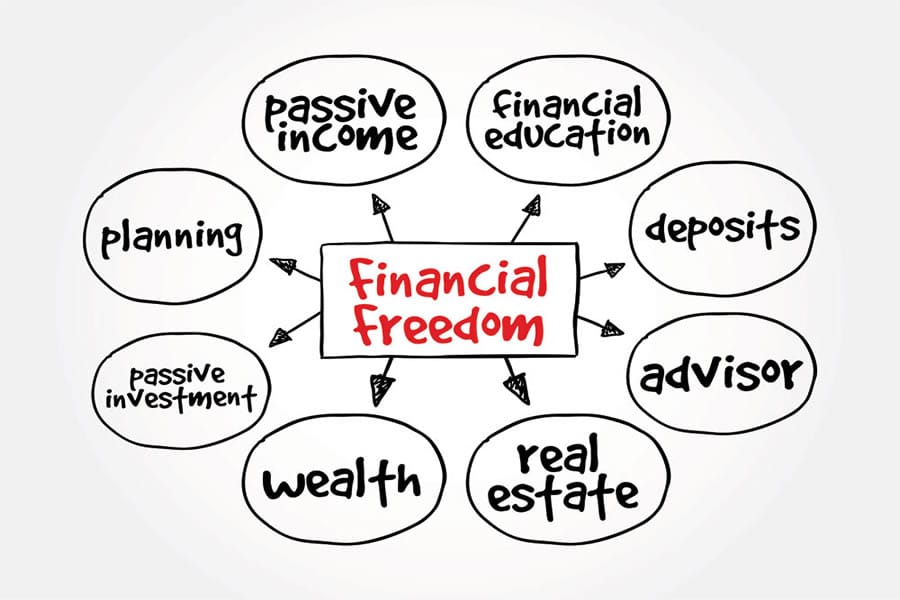Your reflection highlights several critical elements of financial planning and investment that many people overlook, such as the need for financial goals, the importance of a solid plan that accounts for both up and down market cycles, and the critical role of cash flow. Here’s a breakdown of the key lessons and strategies you discussed and how to apply them effectively:
1. Set Clear, Measurable Financial Goals
- As you mentioned, a goal is a dream with a deadline. It’s essential to define your financial objectives with specific amounts and timelines, such as saving N200,000 by a particular date or earning an additional N10,000 per month. These goals need to be realistic, achievable, and backed by a strategy.
- Action Step: Write down your financial goals, with clear deadlines, and review them regularly. Break them down into short-term, medium-term, and long-term objectives.
2. Understand Your Starting Point
- Before you can achieve your goals, it’s crucial to know where you currently stand financially. This includes understanding your cash flow, savings, debt, and investment portfolio. Without this clear picture, planning becomes guesswork.
- Action Step: Conduct a thorough assessment of your current financial status. This includes listing your income sources, expenses, assets, and liabilities.
3. Create a Plan for Both Bull and Bear Markets
- Financial markets fluctuate, and planning only for market upturns is a common mistake. Having a strategy that accounts for both market gains and downturns is essential to long-term success. As you said, many people panic and sell when markets crash, but true investors often see this as a buying opportunity.
- Action Step: Develop a dual strategy for both bullish and bearish market conditions. Identify investment opportunities that can thrive during market downturns, such as dividend-paying stocks or recession-resistant industries.
4. Invest for Cash Flow, Not Just Capital Gains
- Cash flow is king, especially when you’re starting out. Focusing on investments that generate regular income allows you to have liquidity while still building wealth. This means investing in dividend-paying stocks, rental properties, or other vehicles that provide steady cash flow.
- Action Step: Re-evaluate your current investments. Ensure that at least a portion of your portfolio generates cash flow, whether through dividends, interest, or rental income.
5. Diversify Across Investment Vehicles and Geographies
- You mentioned the importance of being adaptable and not relying solely on one type of investment. Markets are dynamic, and it’s wise to consider multiple options like treasury bills, fixed deposits, stocks, real estate, or even foreign markets. This diversification helps you hedge against risks such as currency devaluation, inflation, or stock market crashes.
- Action Step: Explore new asset classes or geographies for investment. If you are unfamiliar with certain vehicles (e.g., foreign stocks or government bonds), consult with a financial advisor or take courses to build your knowledge.
6. Stay Calm During Market Fluctuations
- Financial markets can be volatile, but as you pointed out, your blood pressure shouldn’t rise and fall with every market move. If your investment plan is sound, you should be prepared for both highs and lows. Having a buffer—like planning for lower-than-expected interest rates or stock returns—can help keep you calm during downturns.
- Action Step: Plan for volatility by setting realistic expectations. For example, if interest rates are at 10%, plan for 7% so that you’re covered if rates fall.
7. Develop an Entry and Exit Strategy for Every Investment
- Every investment needs a clear entry and exit strategy. It’s important to know when to invest, how long you plan to hold, and when to cash out. This discipline ensures that you’re not reacting emotionally to market conditions, but rather executing a well-thought-out plan.
- Action Step: For each of your current investments, define your entry point (why you invested), your exit strategy (when you’ll sell or move funds), and your rationale (e.g., 20% profit target or a specific timeframe).
8. Invest in Financial Education
- As you wisely pointed out, you need to be an informed investor before diving into any market. Understanding how markets work, the risks involved, and the strategies to employ during various economic cycles is vital. It’s the same principle as learning to drive before getting behind the wheel.
- Action Step: Take time to learn. Enroll in courses, read books, or attend seminars on investing, personal finance, and market cycles. The more knowledgeable you are, the better decisions you’ll make.
9. Focus on Assets That Generate Income
- Not every investment is a true asset. As you mentioned, an investment that doesn’t generate cash flow isn’t really an asset until you sell it. Prioritize investments that offer both potential appreciation and income generation.
- Action Step: Focus on acquiring assets that pay you regularly, such as rental properties or dividend-paying stocks, rather than speculative investments that only pay out when sold.
10. Be Adaptable and Adjust Your Plan as Needed
- Your plan should be flexible enough to adapt to changing market conditions. Goals can shift as you gather more information or as your financial situation evolves. Being adaptable means reviewing and revising your plan periodically to ensure it stays aligned with your overall objectives.
- Action Step: Set a schedule (e.g., quarterly) to review and adjust your financial plan based on any changes in the market, your income, or your goals.
Final Thoughts
Achieving financial freedom is a journey that requires thoughtful planning, disciplined execution, and a commitment to ongoing education. By setting clear financial goals, creating a solid plan that accounts for market cycles, and focusing on cash flow generation, you can bridge the gap between where you are and where you want to be financially.
The key is to take proactive steps and continuously adjust your strategy as needed while staying calm and informed in the face of market fluctuations. Your financial future is in your hands, and with the right plan, you can achieve your goals.

